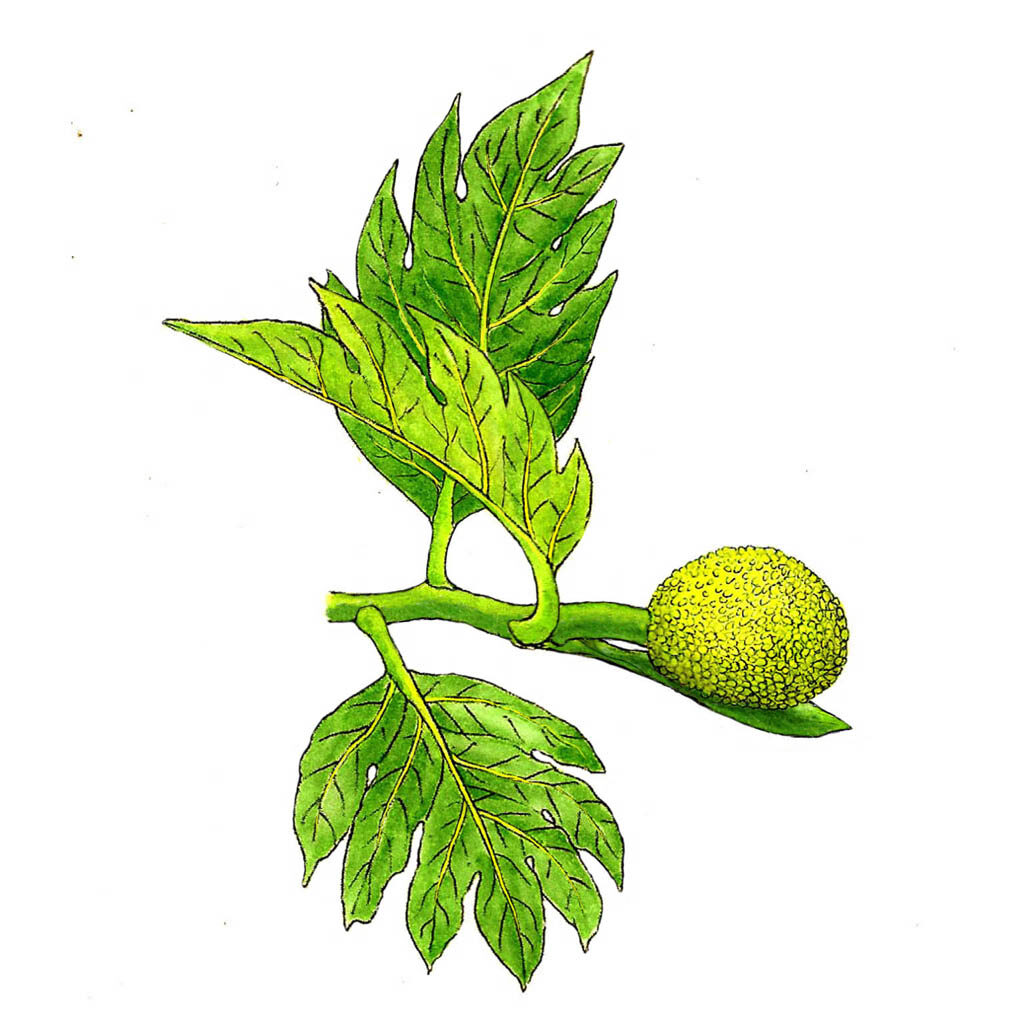Breadfruit Tree

Breadfruit isn’t native to Central America, but was brought here by colonists who got it in the South Pacific, perhaps New Guinea, the Philippines, or somewhere between. In fact, Captain Bligh was on an expedition to collect breadfruit plants on the HMS Bounty in 1789 when he experienced the fabled Mutiny on the Bounty. Now breadfruit is grown in around 90 countries world wide, and is closely related to the jackfruit and breadnut, both of which I believe we have in the Milpa at BIB. There’s a beautiful specimen on the left just after the bridge over the creek on the way to Martz Farm.
The fruit resembles the small purple fruits of the mulberry tree found in the northern hemisphere except that they are green and usually about the size of a grapefruit, which seems enormous until you see a jackfruit, which can weigh as much as 120 pounds, with a length of 35″ and a diameter of 20 inches. But the two fruits start out looking very similar, so check out the leaf. A jackfruit has smallish oval leaves, while breadfruit leaves are huge and lobed, with yellow veins.
Breadfruit is a staple food in tropical regions, with the fruit being eaten green or ripe, roasted, baked, fried or boiled. Cooked semi-ripe breadfruit is said to taste like potatoes or freshly baked bread. Here are some useful-looking recipes and ways to use breadfruit.
The breadfruit was one of the items considered essential to pack when the Polynesians headed across the trackless ocean on their way to find new islands. They planted breadfruits when they reached their destinations so they would have familiar food as they settled. The tree offered more than just food, though, because all parts of it yield a sticky latex which could be used for caulking boat seams, and the wood made good canoes and other items. The rest is history.
If you want to know more about breadfruit, try looking here.